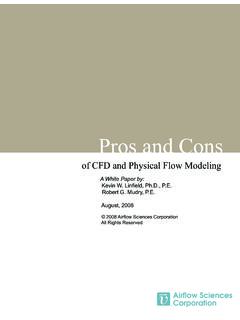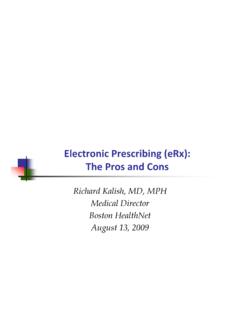Transcription of The Pros and Cons of EEG and MEG Source Imaging
1 The Pros and cons of EEG and MEG Source Imaging 12-6-2011. John S. Ebersole, The University of Chicago Illinois MEG Center Alexian Brothers Medical Center American Epilepsy Society | Annual Meeting Disclosure Compumedics USA Speaker American Epilepsy Society | Annual Meeting Learning Objectives Identify the biophysical properties of EEG and MEG that contribute to their relative abilities to record epileptiform brain activity. Determine how these strengths and weaknesses affect the overall clinical usefulness of EEG and MEG Source Imaging . American Epilepsy Society | Annual Meeting Background 1. Localization of the epileptogenic focus is the critical and rate-limiting step in an evaluation for epilepsy surgery. A variety of non-invasive localization techniques are currently available . MRI, PET, SPECT, fMRI, MEG, EEG. Background 2.
2 Only EEG and MEG are: Direct measures of epileptic pathophysiology Performed in real time with msec resolution Provide temporal sequencing of activity, propagation Biophysics of EEG and MEG Fields Basic Principles of MEG. Orientation of Sources of Magnetic Neurons Fields Skin Skull CSF. Active neurons Cortex EEG Sensitivity EEG requires >10 sq cm EEG visualizes gyral and unopposed fissural sources, small sulcal sources cancel EEG dipoles are deep to Source cortex For large sources, EEG favors center of activity EEG is sensitive to all Source orientations, but radial more so than tangential A B. C. D. C. A B. C. D. MEG Sensitivity MEG requires 4-6 sq cm MEG visualizes large unopposed sulci, fissures, and tangential planes MEG dipoles more accurately reflect Source depth For large sources, MEG can favor an edge Sensitive to a tangential Source orientation MEG and EEG Fields EEG field orientation is the same as the generator pyramidal cells MEG field orientation is orthogonal to that of the generator pryramidal cells MEG field maxima are closer together than associated EEG field maxima MEG/EEG Complements Volume conductor effects - + MEG.
3 Spatial sampling - + MEG. Temporal sampling - + EEG. Source area - + MEG. Radial sensitivity - + EEG. Tangential sensitivity - + MEG. Deep Source sensitivity - + EEG. Source Reconstruction 3D reconstruction of cortical sources of EEG. or MEG requires a biophysical model Multiple models: Simple, point Source dipole (unrealistic, easy to use and interpret). Source Reconstruction 3D reconstruction of cortical sources of EEG. or MEG requires a biophysical model Multiple models: Complex, extended Source current density (pseudo-realistic, needs thresholding ). MEG vs. EEG. Most patients have both EEG spikes and MEG spikes Their dipole Source models commonly differ by: Orientation radial vs tangential dominant Location mm vs cm Timing either can lead or lag MEG/EEG Interpretation Scenarios MEG EEG Synchrony Interpret: EEG adds Tan Tan Sync nothing Tan - - nothing Tan Rad Sync radial comp - Rad - location and orient *.
4 Tan Rad MEG leads rad comp of propag Tan Rad EEG leads origin and rad comp *. MEG/EEG Interpretation Scenarios MEG EEG Synchrony Interpret: EEG adds Tan Tan Sync nothing Tan - - nothing Tan Rad Sync radial comp - Rad - location and orient *. Tan Rad MEG leads rad comp of propag Tan Rad EEG leads origin and rad comp *. MEG/EEG Interpretation Scenarios MEG EEG Synchrony Interpret: EEG adds Tan Tan Sync nothing Tan - - nothing Tan Rad Sync radial comp - Rad - location and orient *. Tan Rad MEG leads rad comp of propag Tan Rad EEG leads origin and rad comp *. MEG/EEG Interpretation Scenarios MEG EEG Synchrony Interpret: EEG adds Tan Tan Sync nothing Tan - - nothing Tan Rad Sync radial comp - Rad - location and orient *. Tan Rad MEG leads rad comp of propag Tan Rad EEG leads origin and rad comp *. Practice Parameters When the MEG and EEG fields are synchronous, Source characterization must be a synthesis of MEG's more accurate dipole location and EEG's more complete dipole orientation.
5 When spike/seizure fields are radial there will likely be no model-worthy MEG field. EEG Source modeling should be performed MEG/EEG Interpretation Scenarios MEG EEG Synchrony Interpret: EEG adds Tan Tan Sync nothing Tan - - nothing Tan Rad Sync radial comp - Rad - location and orient *. Tan Rad MEG leads rad comp of propag Tan Rad EEG leads origin and rad comp *. MEG/EEG Interpretation Scenarios MEG EEG Synchrony Interpret: EEG adds Tan Tan Sync nothing Tan - - nothing Tan Rad Sync radial comp - Rad - location and orient *. Tan Rad MEG leads rad comp of propag Tan Rad EEG leads origin and rad comp *. Practice Parameter When MEG and EEG fields are asynchronous, dipole models of the leading field define Source origin, while those of the lagging field help to characterize propagation. MEG/EEG Interpretation Scenarios In 2 of 6 scenarios, MEG provides superior or the only localization of the spike Source In 2 of 6 scenarios, EEG provides superior or the only localization of spike origin In 2 of 6 scenarios, MEG and EEG each add to the completeness/accuracy of the spike interpretation Bottom Line Comparison MEG sees a window of brain activity (tangential fields) with more sensitivity and clarity than EEG.
6 Localization of that activity with Source models is more accurate than with EEG. EEG sees a more complete picture of brain activity (tangential and radial), but less clearly than MEG. Localization with EEG Source models is less precise, but orientation information is more complete than MEG. Conclusion MEG and EEG strengths are complementary and compensate for the weaknesses of the other technology!











